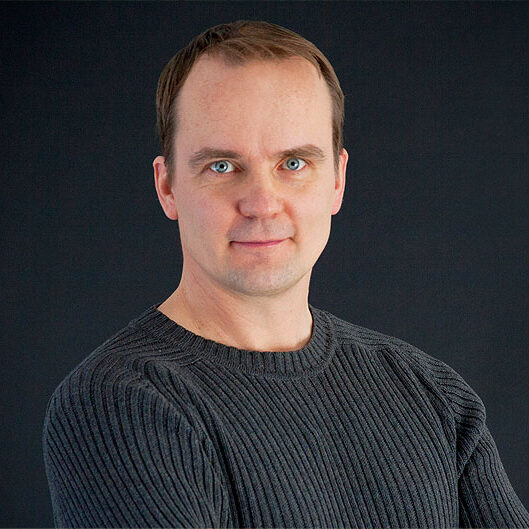Arctic Sauna Pavilion
In Lapland, the extent of living indoor space used to follow a cycle of natural seasons. During cold wintertime, the occupied indoor space was limited to one compact building with an efficient multiuse floorplan, in order to save heating resources. In warmer seasons the living area was expanded into several unheated buildings with different specific purposes, arranged around the common courtyard.
Read the article in Finnish here.
This way the lifestyle in the summer was spacious and the main building was prevented from getting overheated. This pavilion follows this tradition by creating a hub for social activities during the warmer seasons and a buffer for expanded living space when required.
In terms of massing and horizontal orientation, the building is a fusion of two geometrical orders: it follows the regular orthogonal geometry of the existing built context in the northern hill side, but in the southern lake side it takes reference of the organic geometry of the natural shoreline. In terms of vertical geometry, the walls are tilted outwards following the traditional way of constructing storage buildings in Lapland – just like the two existing storage buildings near the pavilion – preventing the timber wall construction from getting wet.
Cooking and dining take place in the unheated main space, dominated by generous views towards the Nordic lake landscape in the South West, and towards the midnight sun in the North. The lake view is captured by the main opening, operated and adjusted by sliding doors, and framed by a covered terrace extension. Reflected sunlight from the lake surface is directed to the space by generous tilted ceiling surface.
Social activities are complemented by the sauna room, where bathing and relaxation takes place within the same space, following an ancient arctic concept. This way the hot air in the sauna is more humid and optimized for the sauna experience, and excess construction for separate rooms are avoided, saving scarce resources. The sauna geometry follows the principle of natural air flow and enhances the optimal movement of hot steams: bathing takes place on cooler lower level, while hot steams and views to the lake are enjoyed higher in the same room.
In order to minimize the carbon footprint and support the local economy, more than 95% of the building material was sourced, processed and constructed locally. The superstructure is of solid log construction, performing as carbon storage and moderating the diurnal temperature and humidity fluctuations, which in the arctic are often significant. The construction waste was reused for heating and cooking, and biological waste from the usage of the building is composted and reused locally as fertilizer in the surrounding arctic gardens.
CREDITS
Toni Yli-Suvanto received Diploma in Architecture in 1999 at the Swiss Federal Institute of Technology ETH Zürich in Switzerland, and before establishing his own practice he worked in several internationally recognized architectural practices in Switzerland, Germany and the United Kingdom. In 2007 he relocated his practice to Finland and established Toni Yli-Suvanto Architects in Helsinki, with an increased emphasis on ecological and social sustainability in architecture. The recent years have taken him to seek solutions in larger scale, which would enable carbon neutrality while providing benefits to indoor climate. In relation to that he has been actively developing modular usage of mass timber structures – CLT in particular – in housing and accommodation projects, in collaboration with the local timber construction industry.

Project in brief
Arctic Sauna Pavilion
- Location | Lappi
- Purpose | Sauna pavilion
- Constructor/Client | Private
- Year of completion | 2019
- Total area | 50 m2
- Architectural Design | Toni Yli-Suvanto Architects
- Structural design | Toni Yli-Suvanto Architects
- Interior design | Toni Yli-Suvanto Architects
- Main contractor | Rainer Yli-Suvanto
- Other contractors | Log construction: Veikko Niemelä, Rainer Yli-Suvanto
- Photographs | Toni Yli-Suvanto Architects
- Text | Toni Yli-Suvanto Architects
